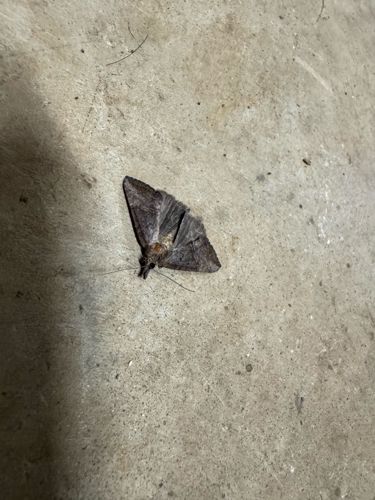Moth
Scientific Name: Too general to provide a specific scientific name from the image alone, as it's a generic moth. Many species within the order Lepidoptera.
Order & Family: Order: Lepidoptera, Family: Likely Noctuidae (Owlet Moths) or Geometridae (Inchworm Moths) based on general appearance, but precise identification without clearer features is difficult.
Size: Generally small to medium-sized, wingspan typically ranges from 1 to 5 cm (0.4 to 2 inches) for many common species, though some can be much smaller or larger.

Natural Habitat
Moths are found in diverse habitats worldwide, including forests, grasslands, deserts, wetlands, agricultural areas, and urban environments. Their presence is often tied to the availability of specific host plants for their larvae.
Diet & Feeding
Adult moths often feed on nectar from flowers, rotting fruit, tree sap, or may not feed at all depending on the species. The larval stage (caterpillar) typically feeds on plant leaves, stems, roots, or other plant material; some are predatory or detritivorous.
Behavior Patterns
Moths are typically nocturnal, attracted to lights at night. They rest during the day, often camouflaged against surfaces. Adults mate and females lay eggs, often on host plants for the larvae. The larvae (caterpillars) are the main feeding stage, undergoing several instars before pupating. The pupa then transforms into the adult moth.
Risks & Benefits
Risks: Some moth larvae can be agricultural or garden pests, damaging crops or ornamental plants (e.g., armyworms, cutworms). A few species can be household pests, damaging fabrics (clothes moths) or stored food products (flour moths). Benefits: Moths are significant pollinators, especially for night-blooming flowers. Their larvae are a crucial food source for many animals, including birds, bats, and other insects, contributing to the food web. They are also indicators of environmental health.
Identified on: 8/9/2025